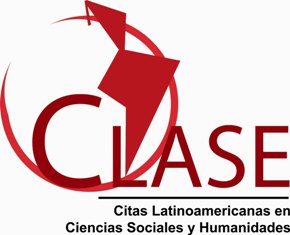Da opacidade à clareza: desmistificando o aprendizado de máquina na educação com IA explicável
Palavras-chave:
inteligência artificial,, inteligência artificial explicável,, aprendizado de máquina, educação.Resumo
A adoção de algoritmos de aprendizado de máquina (ML) na educação está aumentando, com o objetivo de aprimorar os processos de ensino, aprendizado e administração. Esses algoritmos são cruciais para a aprendizagem personalizada, a previsão do desempenho dos alunos e a elaboração de ementas. No entanto, seu uso generalizado pode levar a desafios como parcialidade, falta de transparência e dependência excessiva de decisões automatizadas. Os educadores precisam geralmente de ajuda para entender o funcionamento interno dos modelos de ML. Este artigo examina a IA explicável (XAI) como uma solução para esses problemas na educação. As técnicas de XAI podem fornecer aos educadores e administradores percepções valiosas sobre os algoritmos de ML, facilitando a tomada de decisões mais informadas. Discutimos a diferença entre escolhas algorítmicas transparentes e opacas, demonstrando os benefícios tangíveis da XAI na educação. Os modelos transparentes permitem que os educadores aproveitem seus conhecimentos de forma eficaz, descubram padrões ocultos e melhorem os resultados dos alunos.
Downloads
Referências
BOOK:
DOMINGOS, P. The Master Algorithm: How the Quest for the Ultimate Learning Machine Will Remake Our World. London: Penguin Books Limited, 2015.
MOLNAR, C. Interpretable Machine Learning: A guide for making black box models explainable. Victoria: Leanpub, 2023.
RUSSELL, S. J.; NORVIG, P. Artificial Intelligence: A Modern Approach. Hoboken: Pearson, 2021. (Pearson series in artificial intelligence).
SAMEK, W. et al. Explainable AI: Interpreting, Explaining and Visualizing Deep Learning. Cham: Springer International Publishing, 2019. v. 11700. DOI: https://doi.org/10.1007/978-3-030-28954-6. Available at: https://link.springer.com/content/pdf/10.1007/978-3-030-28954-6.pdf. Accessed on: 28 Feb. 2024.
BOOK CHAPTER:
ANCONA, M. et al. Gradient-based attribution methods. In: ANCONA, M. et al. Explainable AI: Interpreting, Explaining and Visualizing Deep Learning. Cham: Springer International Publishing, 2019. p. 169-191. DOI: https://doi.org/10.1007/978-3-030-28954-6_9. Available at: https://link.springer.com/content/pdf/10.1007/978-3-030-28954-6.pdf. Accessed on: 28 Feb. 2024.
BONIFRO, F. et al. Student Dropout Prediction. In: BITTENCOURT, I. I. et al. (Ed.). Artificial Intelligence in Education. Cham: Springer International Publishing, 2020. p. 129-140. DOI: https://doi.org/10.1007/978-3-030-52237-7_11. Available at: https://link.springer.com/content/pdf/10.1007/978-3-030-52237-7.pdf. Accessed on: 28 Feb. 2024.
MULLARKEY, M. T. et al. Citizen data scientist: A design science research method for the conduct of data science projects. In: TULU, B.; DJAMASBI, S.; LEROY, G. (Ed.). Extending the Boundaries of Design Science Theory and Practice. Cham: Springer International Publishing, 2019. p. 191-205. DOI: https://doi.org/10.1007/978-3-030-19504-5_13.
PATIL, T.; BHAVSAR, A. K. Data science team roles and need of data science: A review of different cases. In: KOTECHA, K. et al. (Ed.). Data Science and Intelligent Applications. Singapore: Springer Singapore, 2021. p. 13-22. DOI: https://doi.org/10.1007/978-981-15-4474-3_2. Available at: https://link.springer.com/content/pdf/10.1007/978-981-15-4474-3.pdf. Accessed on: 28 Feb. 2024.
SAMEK, W.; MÜLLER, K. R. Towards explainable artificial intelligence. In: SAMEK, W.; MÜLLER, K. R. (Orgs.). Explainable AI: Interpreting, Explaining and Visualizing Deep Learning. Cham: Springer International Publishing, 2019. p. 5-22. DOI: https://doi.org/10.1007/978-3-030-28954-6_1. Available at: https://link.springer.com/content/pdf/10.1007/978-3-030-28954-6.pdf. Accessed on: 28 Feb. 2024.
SINGH, P. Model deployment and challenges. In: SINGH, P. (Org.). Machine Learning Models to Production: With Flask, Streamlit, Docker, and Kubernetes on Google Cloud Platform. Berkeley: Apress, 2021. p. 55-66. DOI: https://doi.org/10.1007/978-1-4842-6546-8_2.
ARTICLE IN A PERIODICAL (MAGAZINE OR JOURNAL):
ADADI, A.; BERRADA, M. Peeking inside the black-box: A survey on explainable artificial intelligence (XAI). IEEE Access, v. 6, p. 52138-52160, 2018. DOI: https://doi.org/10.1109/ACCESS.2018.2870052. Available at: https://ieeexplore.ieee.org/stamp/stamp.jsp?tp=&arnumber=8466590. Accessed on: 28 Feb. 2024.
ARRIETA, A. B. et al. Explainable artificial intelligence (XAI): Concepts, taxonomies, opportunities and challenges toward responsible AI. Information Fusion, Elsevier, v. 58, p. 82-115, June 2020. DOI: https://doi.org/10.1016/j.inffus.2019.12.012.
BEATTIE, I. R.; THIELE, M. Connecting in class? College class size and inequality in academic social capital. The Journal of Higher Education, Routledge, v. 87, n. 3, p. 332-362, 2016. DOI: https://doi.org/10.1080/00221546.2016.11777405.
BEER, C.; LAWSON, C. The problem of student attrition in higher education: An alternative perspective. Journal of Further and Higher Education, Routledge, v. 41, n. 6, p. 773-784, 2017. DOI: https://doi.org/10.1080/0309877X.2016.1177171.
BERNACKI, M. L.; WALKINGTON, C. The role of situational interest in personalized learning. Journal of Educational Psychology, v. 110, n. 6, p. 864-881, 2018. DOI: https://psycnet.apa.org/doi/10.1037/edu0000250.
BUCKLEY, P.; LEE, P. The impact of extra-curricular activity on the student experience. Active Learning in Higher Education, v. 22, n. 1, p. 37-48, 2021. DOI: https://doi.org/10.1177/1469787418808988.
CALUDE, C. S.; LONGO, G. The Deluge of Spurious Correlations in Big Data. Foundations of Science, v. 22, n. 3, p. 595-612, 2017. DOI: https://doi.org/10.1007/s10699-016-9489-4.
CHIU, T. K. F. The Impact of Generative AI (GenAI) on Practices, Policies and Research Direction in Education: A Case of ChatGPT and Midjourney. Interactive Learning Environments, Routledge, v. 0, n. 0, p. 1-17, 2023. DOI: https://doi.org/10.1080/10494820.2023.2253861. Available at: https://www.tandfonline.com/doi/full/10.1080/10494820.2023.2253861#d1e328. Accessed on: 28 Feb. 2024.
FABIAN, K.; TOPPING, K. J.; BARRON, I. G. Mobile technology and mathematics: effects on students’ attitudes, engagement, and achievement. Journal of Computers in Education, v. 3, n. 1, p. 77-104, 2016. DOI: https://doi.org/10.1007/s40692-015-0048-8.
GOLDBERG, P. et al. Attentive or not? toward a machine learning approach to assessing students’ visible engagement in classroom instruction. Educational Psychology Review, v. 33, n. 1, p. 27-49, 2021. DOI: https://doi.org/10.1007/s10648-019-09514-z. Available at: https://link.springer.com/content/pdf/10.1007/s10648-019-09514-z.pdf. Accessed on: 28 Feb. 2024.
GRIFFIN, G. The ‘work-work balance’ in higher education: between over-work, falling short and the pleasures of multiplicity. Studies in Higher Education, Routledge, v. 47, n. 11, p. 2190-2203, 2022. DOI: https://doi.org/10.1080/03075079.2021.2020750. Available at: https://www.tandfonline.com/doi/full/10.1080/03075079.2021.2020750#d1e109. Accessed on: 28 Feb. 2024.
GUNNING, D.; AHA, D. DARPA’s explainable artificial intelligence (XAI) program. AI Magazine, v. 40, n. 2, p. 44-58, 2019. DOI: https://doi.org/10.1609/aimag.v40i2.2850. Available at: https://onlinelibrary.wiley.com/doi/epdf/10.1609/aimag.v40i2.2850. Accessed on: 28 Feb. 2024.
GUNNING, D. et al. XAI - Explainable Artificial Intelligence. Science Robotics, v. 4, n. 37, 2019. DOI: https://doi.org/10.1126/scirobotics.aay7120.
HAVERINEN-SHAUGHNESSY, U.; SHAUGHNESSY, R. J. Effects of classroom ventilation rate and temperature on students’ test scores. PLOS ONE, Public Library of Science, v. 10, n. 8, p. 1-14, 08 2015. DOI: https://doi.org/10.1371/journal.pone.0136165. Available at: https://journals.plos.org/plosone/article/file?id=10.1371/journal.pone.0136165&type=printable. Accessed on: 28 Feb. 2024.
KORKMAZ, C.; CORREIA, A. P. A review of research on machine learning in educational technology. Educational Media International, Routledge, v. 56, n. 3, p. 250-267, 2019. DOI: https://doi.org/10.1080/09523987.2019.1669875.
KORSAKIENE, R. et al. Factors driving turnover and retention of information˙ technology professionals. Journal of Business Economics and Management, Taylor & Francis, v. 16, n. 1, p. 1-17, 2015. DOI: https://doi.org/10.3846/16111699.2015.984492. Available at: https://journals.vilniustech.lt/index.php/JBEM/article/view/2698/2209. Accessed on: 28 Feb. 2024.
LUAN, H.; TSAI, C. C. A review of using machine learning approaches for precision education. Educational Technology & Society, International Forum of Educational Technology & Society, v. 24, n. 1, p. 250–266, 2021. Available at: https://www.jstor.org/stable/26977871. Accessed on: 28 Feb. 2024.
L’HEUREUX, A. et al. Machine learning with big data: Challenges and approaches. IEEE Access, v. 5, p. 7776-7797, 2017. DOI: https://doi.org/10.1109/ACCESS.2017.2696365. Available at: https://ieeexplore.ieee.org/stamp/stamp.jsp?tp=&arnumber=7906512. Accessed on: 01 Mar. 2024.
MUNIR, S.; ZAHEER, M. The role of extra-curricular activities in increasing student engagement. Asian Association of Open Universities Journal, v. 16, n. 3, p. 241-254, 2021. DOI: https://doi.org/10.1108/AAOUJ-08-2021-0080. Available at: https://www.emerald.com/insight/content/doi/10.1108/AAOUJ-08-2021-0080/full/pdf?title=the-role-of-extra-curricular-activities-in-increasing-student-engagement. Accessed on: 01 Mar. 2024.
NABIZADEH, A. H. et al. Learning path personalization and recommendation methods: A survey of the state-of-the-art. Expert Systems with Applications, v. 159, p. 113596, 2020. DOI: https://doi.org/10.1016/j.eswa.2020.113596.
NAH, F. F. et al. Generative AI and ChatGPT: Applications, challenges, and AI-human collaboration. Journal of Information Technology Case and Application Research, Routledge, v. 25, n. 3, p. 277-304, 2023. DOI: https://doi.org/10.1080/15228053.2023.2233814. Available at: https://www.tandfonline.com/doi/epdf/10.1080/15228053.2023.2233814?needAccess=true. Accessed on: 01 Mar. 2024.
PESSACH, D.; SHMUELI, E. A review on fairness in machine learning. ACM Computing Surveys, Association for Computing Machinery, New York, NY, USA, v. 55, n. 3, feb. 2022. DOI: https://doi.org/10.1145/3494672. Available at: https://dl.acm.org/doi/pdf/10.1145/3494672. Accessed on: 01 Mar. 2024.
SAGI, O.; ROKACH, L. Ensemble learning: A survey. Wiley Interdisciplinary Reviews: Data Mining and Knowledge Discovery, Wiley Online Library, v. 8, n. 4, p. e1249, 2018. DOI: https://doi.org/10.1002/widm.1249.
SANTALLY, M. I.; SENTENI, A. Effectiveness of personalised learning paths on students learning experiences in an e-learning environment. European Journal of Open, Distance and E-learning, ERIC, v. 16, n. 1, p. 36-52, 2013. Available at: https://eric.ed.gov/?id=EJ1017459. Accessed on: 01 Mar. 2024.
SCHRÖER, C.; KRUSE, F.; GÓMEZ, J. M. A systematic literature review on applying CRISP-DM process model. Procedia Computer Science, v. 181, p. 526-534, 2021. DOI: https://doi.org/10.1016/j.procs.2021.01.199. Available at: https://www.sciencedirect.com/science/article/pii/S1877050921002416/pdf?md5=34d7ce6ba598594c11c16770ac53a4e8&pid=1-s2.0-S1877050921002416-main.pdf. Accessed on: 01 Mar. 2024.
SHWARTZ-ZIV, R.; ARMON, A. Tabular data: Deep learning is not all you need. Information Fusion, v. 81, p. 84-90, 2022. DOI: https://doi.org/10.1016/j.inffus.2021.11.011.
VIAENE, S. Data scientists aren’t domain experts. IT Professional, v. 15, n. 6, p. 12-17, 2013. DOI: https://doi.org/10.1109/MITP.2013.93.
WACHTER, S.; MITTELSTADT, B.; RUSSELL, C. Counterfactual explanations without opening the black box: Automated decisions and the GDPR. Harvard Journal of Law & Technology, v. 31, n. 2, p. 841, 2018. DOI: https://doi.org/10.2139/ssrn.3063289. Available at: https://jolt.law.harvard.edu/assets/articlePDFs/v31/Counterfactual-Explanations-without-Opening-the-Black-Box-Sandra-Wachter-et-al.pdf. Accessed on: 01 Mar. 2024.
YOUSAFZAI, B. K.; HAYAT, M.; AFZAL, S. Application of machine learning and data mining in predicting the performance of intermediate and secondary education level student. Education and Information Technologies, v. 25, n. 6, p. 4677-4697, 2020. DOI: https://doi.org/10.1007/s10639-020-10189-1. Available at: https://link.springer.com/content/pdf/10.1007/s10639-020-10189-1.pdf. Accessed on: 01 Mar. 2024.
ZHANG, K.; ASLAN, A. B. AI technologies for education: Recent research & future directions. Computers and Education: Artificial Intelligence, v. 2, p. 100025, 2021. DOI: https://doi.org/10.1016/j.caeai.2021.100025. Available at: https://www.sciencedirect.com/science/article/pii/S2666920X21000199/pdfft?md5=6f79cd1edcc954755ba3b4feec270613&pid=1-s2.0-S2666920X21000199-main.pdf. Accessed on: 01 Mar. 2024.
ZHOU, L. et al. Machine learning on big data: Opportunities and challenges. Neurocomputing, v. 237, p. 350-361, May 2017. DOI: https://doi.org/10.1016/j.neucom.2017.01.026.
PUBLICATION OF PROCEEDINGS OF SCIENTIFIC EVENTS
BINNS, R. On the apparent conflict between individual and group fairness. In: 2020 CONFERENCE ON FAIRNESS, ACCOUNTABILITY, AND TRANSPARENCY, 20., January 27-30, 2020, Barcelona. FAT*’20: Proceedings […]. Association for Computing Machinery, 2020. p. 514-524. ISBN 9781450369367. DOI: https://doi.org/10.1145/3351095.3372864. Available at: https://dl.acm.org/doi/pdf/10.1145/3351095.3372864. Accessed on: 01 Mar. 2024.
FRIEDLER, S. A. et al. A comparative study of fairness-enhancing interventions in machine learning. In: CONFERENCE ON FAIRNESS, ACCOUNTABILITY, AND TRANSPARENCY, 19., January 29-31, 2019, Atlanta. FAT*’19: Proceedings […]. New York: Association for Computing Machinery, 2019. p. 329-338. DOI: https://doi.org/10.1145/3287560.3287589. Available at: https://dl.acm.org/doi/pdf/10.1145/3287560.3287589. Accessed on: 01 Mar. 2024.
LUNDBERG, S. M.; LEE, S. A unified approach to interpreting model predictions. In: INTERNATIONAL CONFERENCE ON NEURAL INFORMATION PROCESSING SYSTEMS, 31., December 4-9, 2017, Long Beach. NIPS’17: Proceedings […]. Long Beach: Association for Computing Machinery, 2017. p. 4768-4777. DOI: https://doi.org/10.5555/3295222.3295230. Available at: https://dl.acm.org/doi/pdf/10.5555/3295222.3295230. Accessed on: 01 Mar. 2024.
MOTHILAL, R. K.; SHARMA, A.; TAN, C. Explaining machine learning classifiers through diverse counterfactual explanations. In: 2020 CONFERENCE ON FAIRNESS, ACCOUNTABILITY, AND TRANSPARENCY, 20., January 27-30, 2020, Barcelona. FAT*’ 20: Proceedings […]. Barcelona: Association for Computing Machinery, 2020. p. 607-617. DOI: https://doi.org/10.1145/3351095.3372850. Available at: https://dl.acm.org/doi/pdf/10.1145/3351095.3372850. Accessed on: 01 Mar. 2024.
RIBEIRO, M. T.; SINGH, S.; GUESTRIN, C. “Why should I trust you?”: Explaining the predictions of any classifier. In: ACM SIGKDD INTERNATIONAL CONFERENCE ON KNOWLEDGE DISCOVERY AND DATA MINING, 22., June 12-17, 2016, San Diego. Proceedings […]. San Diego: Association for Computing Machinery, 2016. p. 1135–1144. DOI: https://doi.org/10.18653/v1/N16-3020. Available at: https://aclanthology.org/N16-3020.pdf. Accessed on: 01 Mar. 2024.
Downloads
Publicado
Como Citar
Edição
Seção
Licença
Copyright (c) 2024 REVISTA INTERSABERES

Este trabalho está licenciado sob uma licença Creative Commons Attribution-NonCommercial-NoDerivatives 4.0 International License.
Os direitos autorais dos artigos publicados na Revista são de acordo com a licença CC-BY-ND - Creative Commons ( https://creativecommons.org/licenses/by-nd/4.0/legalcode)
Esta licença permite que outras pessoas reutilizem o trabalho para qualquer finalidade, inclusive comercialmente; no entanto, não pode ser compartilhado com outras pessoas de forma adaptada e o crédito deve ser fornecido ao autor.
Os direitos autorais dos artigos publicados na Revista são do autor, com os direitos de primeira publicação para a Revista

























